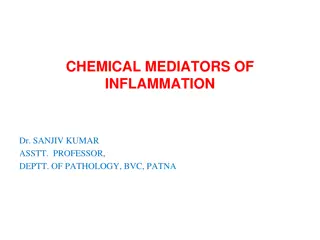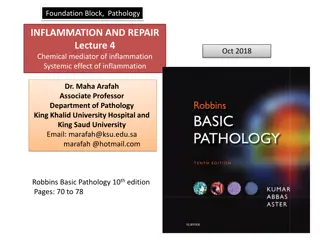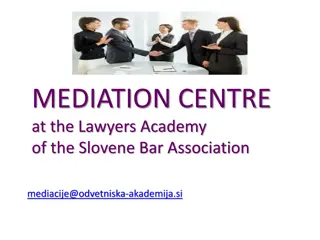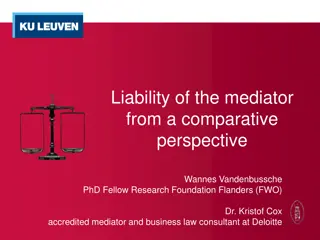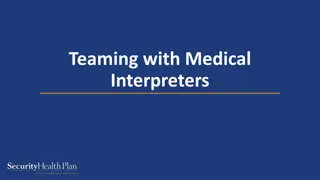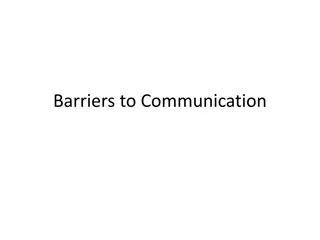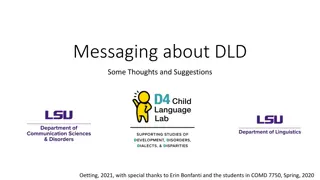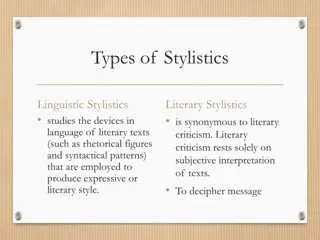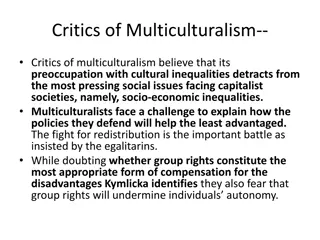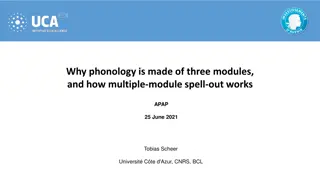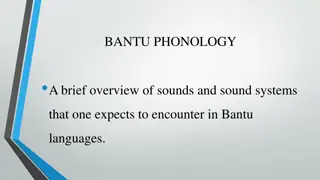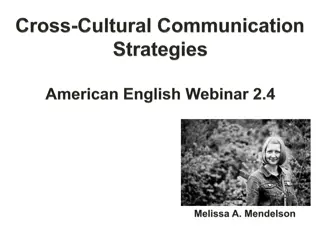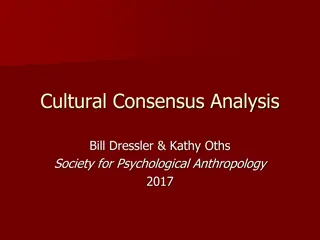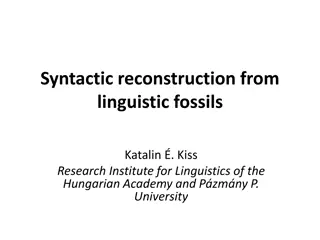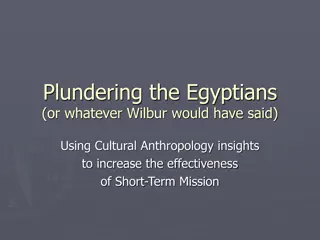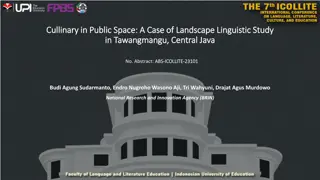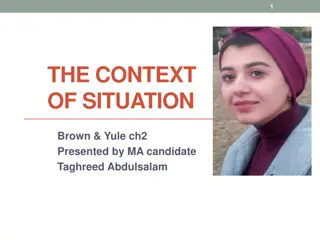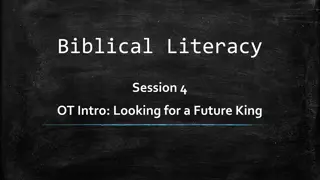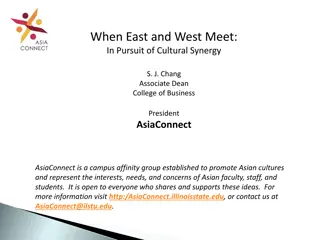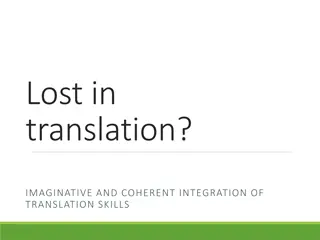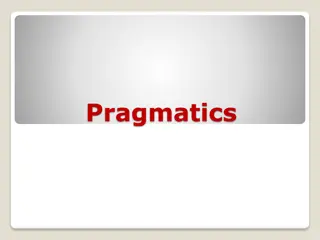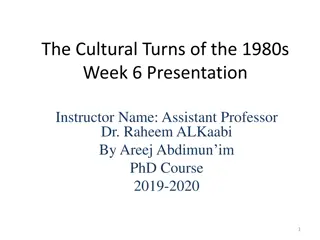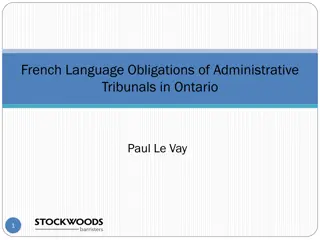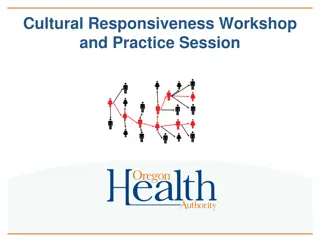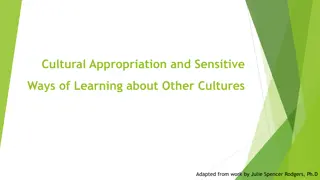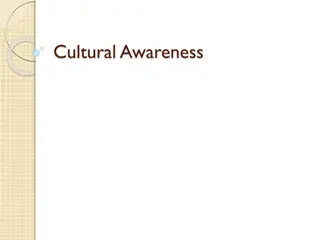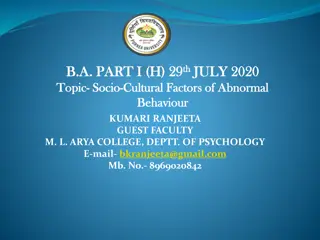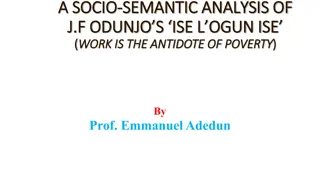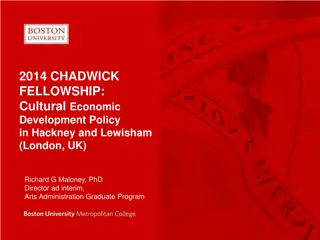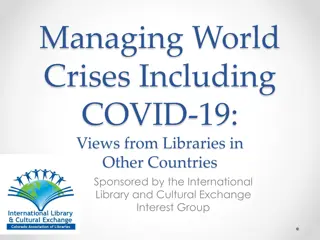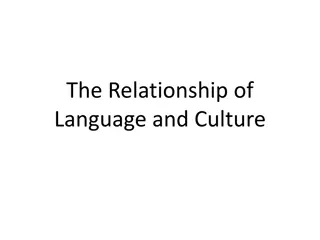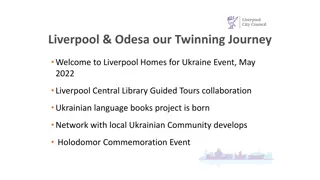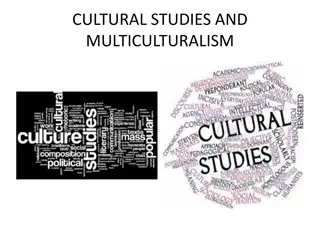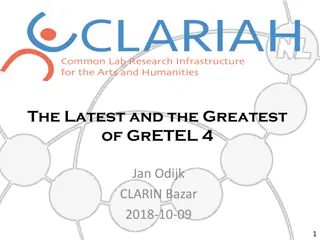Understanding the Roles of Linguistic and Cultural Mediators in Support Settings
Linguistic and Cultural Mediators play crucial roles in supporting survivors by facilitating communication, providing cultural context, and offering additional support beyond language interpretation. They serve as bridges between cultures, helping to convey information accurately while remaining impartial and sensitive to the needs of both parties involved.
Uploaded on Sep 19, 2024 | 0 Views
Download Presentation

Please find below an Image/Link to download the presentation.
The content on the website is provided AS IS for your information and personal use only. It may not be sold, licensed, or shared on other websites without obtaining consent from the author. Download presentation by click this link. If you encounter any issues during the download, it is possible that the publisher has removed the file from their server.
E N D
Presentation Transcript
3 The roles and responsibilities of linguistic and cultural mediators in supporting survivors
Linguistic and Cultural Mediators and interpreters: roles and responsibilities Module 3 2
An Interpreter... Is a recognized professional figure whose training and internship has been formulated on the basis of standard criteria Verbally translates from one language (source language) to another language (target language) May interpret in three main ways: simultaneous interpreting, performed generally from an interpreting booth in a conference environment consecutive interpreting, where the speaker leaves pauses for the interpreter to relay what they are saying one section at a time bilateral interpreting (the most common in-service provision), where the interpreter relays both (or all) sides of a conversation between speakers of different languages, working both into and out of their main language. 3 Module 3
A Linguistic and Cultural Mediator (LCM)... is not recognized as a professional figure in many countries tends to work in their mother tongue and other vehicular languages might work in several services and institutions at the same time performs multiple and diverse tasks. 4 Module 3
A Linguistic and Cultural Mediator... is someone who facilitates communication between one person or a group of people and a service provider or an institution, including cultural elements (both verbal and non-verbal) can give support to both parties regarding cultural attitudes, beliefs and behaviours. 5 Module 3
Main differences between interpreter & LCM Interpreter x x LCM x x x x x x x x x Convey information as accurately as possible, while being faithful to the source Act as a bridge between cultures Provide cultural context Liaise with communities, collect information and feed it back to relevant parties x Facilitate communication between two parties Provide additional cultural support, as well as conveying information x x x Remain impartial and neutral in any situation Adapt language to target audience Be sensitive to, and aware of, the situation of the target group 6 Module 3
Linguistic and Cultural Mediators and interpreters... May find themselves working in different fields, e.g., health care, psychological and social support, legal services Can strengthen the service provision team by helping to build trust with the refugee or migrant Can help build a survivor's confidence in the service provider and in the effectiveness of the service/intervention Can help support the survivor's recovery process. 7 Module 3
Recap Understanding the similarities and differences between LCMs and interpreters is key to minimize any conflicts, as they are often working in different areas of service provision. LCMs facilitate communication between one person or a group of people and a service provider or an institution, including cultural elements (both verbal and non-verbal) Interpreters verbally translate from one language to another language 8 Module 3
The complex role of linguistic and cultural mediators Module 3 9
A Linguistic and Cultural Mediator is a... Communication facilitator: providing linguistic and cultural mediation prior to and during medical examinations, psychological sessions, social or legal interviews Client or community liaison: accompanying patients to services, assisting them with reception and admissions procedures, health and social services orientation activities; and in agreement with the doctors and nurses, providing health care education where necessary 10 Module 3
Working with service providers Both the LCM and the service provider should recognize their specific roles, tasks and competencies. At the same time, it should be clear that the service provider is responsible for the management of the session or service. 11 Module 3
Client or community liaison with services Whether it is explicit or not in the stated role of the LCM, the refugee/migrant community might perceive them as an entry point for services. LCMs and service providers must, therefore, be ready for this possibility. If an LCM is specifically tasked to implement outreach work, or accompany refugees or migrants to other services, the parameters of such a role should be provided, together with appropriate training and information. 12 Module 3
How to manage this complexity? Become aware of the variability of rules in different working environments (health services, police, territorial commissions, reception centres, camps, etc.). Understand the scope and limits of the different roles. Learn how to shift from one role to another. Understand that team work is vital, both for the refugees and migrants we assist and for every member of the team in their daily work, including stressful and sometimes risky situations. 13 Module 3
Recap Roles and responsibilities of LCMs may vary substantially in different contexts and organizations, and clients often have many different expectations of LCMs. The key roles and responsibilities of LCMs include: Facilitating communication Client or community liaison 14 9/19/2024 Module 1
Communication in linguistic and cultural mediation Module 3 15
GROUP EXERCISE The power of non-verbal and verbal communication 16 Module 3
Communication Communication is the transfer of information from one person or group to another person or group, mostly through body language, spoken words and/or writing. This communication process has three parts: Encoding the message Transmitting the message Decoding the message. 1. 2. 3. 17 Module 3
The sender The sender 'encodes' the information that starts the communication process: Encoding = the translation of thoughts, ideas or feelings into a message to be communicated This must be done using an appropriate medium, considering both the type of message and who will receive it. 18 Module 3
The message May be composed of: words (written or spoken), tone of voice and non- verbal signs Very often, the intended message does not match the message that is received: the encoding and decoding of messages are filtered by a number of elements, such as the lack of a common vocabulary, non-standard concepts or definitions, culturally influenced non-verbal signs. 19 Module 3
The receiver The receiver decodes the message into thoughts, ideas and feelings. It is the receiver who gives meaning to the message and this, in turn, influences their actions. The ability to listen accurately is vital. Most of us are poor listeners and retain only 25% to 50% of the message. 20 Module 3
Communication for LCMs Supporting another service provider: In outreach/independent work: TRIALOGUE DIALOGUE 21 Module 3
Trialogue Is when three people share communication, with the LCM facilitating communication: The first receiver decodes the message from the first sender (service provider, refugee or migrant) The second sender encodes the message for the second receiver (other operator, refugee or migrant). 22 Module 3
Dialogue Is when an LCM is working alone/directly with a client. The LCM is the receiver who decodes the message of the sender (refugee/migrant) or the sender who encodes the message for the receiver (refugee/migrant). Disclosures of sexual violence may occur during a dialogue. 23 Module 3
Our understanding of messages is shaped by: Personal elements: Personal attitudes and beliefs = the filters through which our perceptions are screened and limited Projections = attributing to others one s own thoughts, ideas, feelings, traits Mood Contextual elements: Language, dialect, slang Specialized jargon Quantity of information Noise 24 Module 3
Limitations of personal perception Selective perception screening out information that you want or need to avoid Stereotyping making assumptions about individuals based on their membership of a generalized group Halo effect a tendency to typify an individual based upon a single trait. 25 Module 3
Limitations caused by contextual elements Type of Cue Explanation and Examples Body motion Gestures, facial expressions, eye behaviour, etc. Body shape, posture, body or breath odours, hair colour, skin colour, etc. Personal physical characteristics Paralanguage Voice qualities, speech habits, laughing, etc. Use of space Ways in which people use and perceive space. Physical environment Building and room design, furnishings, etc. Use of time, cultural differences in perceptions of time. Time 26 Module 3
Communication strategies Use silence when appropriate Effective questioning Follow the survivor s pace Validate feelings Use simple and appropriate language Use healing statements Active listening 27 Module 3
Tips for active listening Resist distractions and focus on the sender Have a purpose for listening Suspend judgement Paraphrase and summarize as needed, to show that you are listening and understanding Try to find the key points within the message Pause before responding to the sender Help the sender to focus if they drift into other topics Clarify when necessary 28 Module 3
Recap Facilitating communication between parties is the core of linguistic and cultural mediation, making it essential for LCMs to be aware of the power and limitations of different forms of communication. Communication is a two-way process that includes encoding, transmission and decoding. It is important to be aware of the potential barriers to effective communication (including selective perception, stereotyping and the halo effect). The goal of communication in the context of service provision is to establish a trusting, safe and supportive helping relationship. 29 Module 3
The power of the words Module 3 30
Negative connotation Languages are full of negative connotations that reproduce certain attitudes and beliefs Non-existent words You may not be able to find words in some languages that translate certain concepts precisely (such as masturbation, rape, transgender). 31 Module 1
Remember the GBV Guiding Principles 32 Module 1
How to avoid mistakes? Vocabulary Study and update your vocabulary - every LCM should work on GBV/SVAMB terminology in their mother tongue: Does the same concept exist in your language? Does it have negative connotations in your culture? Does it discriminate against vulnerable groups? 33 Module 3
How to avoid mistakes? Self-reflection Deepen your knowledge of your own values, attitudes and beliefs: Is there any characteristic related to gender, religion, sexual orientation, etc., that makes you uncomfortable when supporting survivors? Think about how you can practice acceptance, neutrality and non- discrimination. 34 Module 3
How to avoid mistakes? Studying and sharing Taking part in trainings on values clarification, diversity and inclusion, etc. Sharing experiences with your team to find solutions and practice self- reflection. 35 Module 3
Empowering words Victim or survivor? The terms victim and survivor can be used interchangeably. However: Victim is a term often used in the legal and medical sectors. Survivor is the term generally preferred in the psychological and social support sectors because it implies resilience. 36 Module 3
Remember - LCMs must pay attention to: The filter of perception and the non-verbal cues that affect it Stereotyping The halo effect BUT ALSO The lack of vocabulary and the negative connotations of certain words that represent taboo actions or behaviours in some cultures (this is very important for disclosure by GBV/SVAMB survivors). 37 Module 1
Exercise = Neutral + - ? Positive Negative Ambivalent 38 Module 3
Recap Careful attention to the words we use, particularly in the context of LCM and service provision, is important because we express our attitudes and beliefs through language and vocabulary. LCMs should develop discrimination-free approaches to mediation and translation. It is important to study and update your vocabulary, deepen your knowledge of your own values, attitudes and beliefs. Attention must be paid to the filter of perception, stereotyping and the halo effect. 39 Module 3


